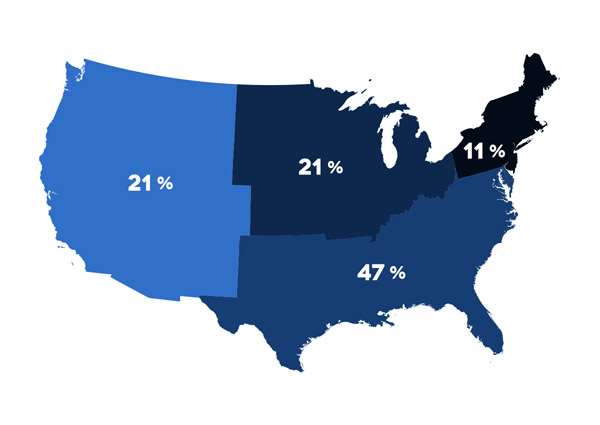Your Cart is Empty
Introducing RemoteLock | The Ultimate Universal Access Control Platform! Connect Your Hardware Today
Categories
Industry
Protect Your Home From Invasions

Let’s face it—the mere thought of a home invasion is scary. The ability to relax and feel safe in our own home is a luxury that we all take for granted—until something happens. Your home is the only environment where you have control over who can get close to you or your family—so protecting your home and family from criminal intrusion should be high on your list of priorities.
That didn’t move the needle with you? You’re all about the numbers—we get it. According to public record posted by the FBI, over 8,000 home invasions occur in the United States every day—that’s about one burglary every fifteen seconds.
You may be asking yourself, “How do I protect my home and family?”
We’re glad you asked—we’ve put together a simple checklist paired with a visual guide to reinforce your home’s security and boost your peace of mind. Some of the bullet points on the final “tips” section are tough to read so we’ve included an expanded list below the graphic. If you would like to zoom in on the graphic, just click it.
Doors
The first step is to secure the obvious entry point and make your home a challenge. Prowlers and burglars will simply move on to the next victim if your house requires too much effort to gain entry. Thieves typically test a house by first ringing the doorbell, trying the handle, and often will put their shoulder into the door to test the door’s strength. From there, weaker doors spring open easily from a pry bar or swift kick above the handle.
- Use solid-core exterior doors including the door into your garage, which should also have a deadbolt.
- Get a wide-angle peephole and use it before answering the door, but consider covering it up while not in use. Reverse peephole viewers are readily available.
- Upgrade your locks to high security locks.
- At the very least you should install longer screws into your door jambs and hinges, preferably 3?screws.
Home Exterior
Here are a few tips to secure the perimeter of your home.
- – Keep your house well lit at night to discourage would-be criminals. Have motion-detecting floodlights on low-lit areas around your home.
- – Plant thorny bushes and shrubs around windows
- – Post stickers and alarm signs on the exterior of your home. Even fake alarm decals and signs can be a deterrent.
- – Invest in security cameras with motion sensors, IR and a solid recording device like a DVR. The cost on these has come down considerably from what they used to be.
- – Make sure your camera recording system is housed in a lockbox so a thief can’t take the recording of their crime.
- – Redundant camera angles can help capture footage of a criminal that has properly cased your house and knows the path they can take to disable a camera before it sees them.
- – Internet cameras can also be a good option if you’re away from your home and still need to monitor them.
- – Invest in a zone alarm to alert you when someone is coming to the door or up the driveway.
- – Use highly visible house numbers so that the police can readily identify your home.
- – Don’t enter your home if it looks like it’s been illegally entered, leave the premises and call the police.
- – Be aware of the trash you leave on the curb. Break down boxes from recently purchased items like TVs and conceal them from prying eyes and the trash man.
Home Interior
Lastly, here are a few pieces of advice for around the home.
- – Invest in a security alarm with interior motion detectors and set the alarm when you’re at home (obviously not the interior motion detector). Criminals rely on an alarm not being set while someone is home and awake.
- – Insure your alarm is monitored and will continue to work in the event you lose power in a storm or it happens to be neutralized.
- – Have a secondary alarm keypad in your master bedroom that can be used to sound a panic alarm or quickly access alarm controls.
- – Have a plan for your family or roommates in your home in the event of a home invasion. Discuss the importance of home security with everyone; it only takes one person to forget to lock a door or window.
- – Consider a safe room as a rally point where you have the ability to protect yourself and call the police. Stash a spare cell phone here.
- – Keep your cell phone by the bed ready for you or another person to call 911.
- – Keep multiple weapons in places that you’ll likely be taken to in an invasion. Obviously you need to be aware of leaving weapons where children can get to them.
- – Get a dog. A barking dog will bring unwanted attention to a potential burglar, but don’t rely on your dog to attack a criminal unless trained to.
- – Mark and engrave your property with your driver’s license number (not social) to aid in returning your stolen property or discourage theft in the first place.
- – Bolt down safes, filing cabinets and lock up expensive items like bikes and four-wheelers.
- – Shred all personal documents using a crosscut shredder. This includes credit card offers, envelopes with the name of your bank, etc.
Browse by Category
© 2025 GoKeyless. All rights reserved. Privacy Policy. Terms of Use. Powered by Brandography.



 Over 5 Million Locks Sold
Over 5 Million Locks Sold Trusted Since 2003
Trusted Since 2003 Help
Help

